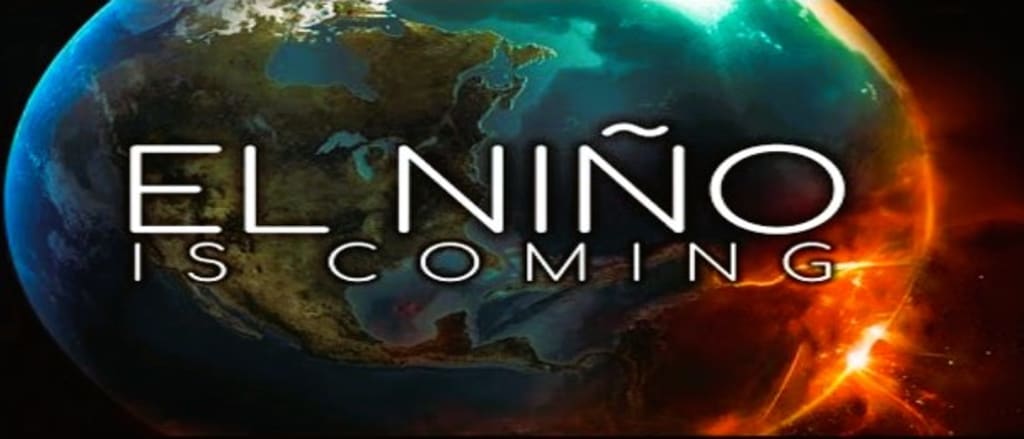What Will El Niño Bring to Earth in 2024?
Do yo know the La Niña and El Niño Southern Oscillation?

Life on Earth is full of cycles and variations that affect our planet in different ways. Some of these cycles occur over relatively short periods and can be predicted with precision, while others take place over larger intervals and can be more difficult to forecast. One such cycle that has a significant impact on our planet is the El Niño Southern Oscillation (ENSO).
The ENSO is a global phenomenon that involves changes in ocean temperatures, atmospheric pressure, and wind patterns in the tropical Pacific Ocean. It is characterized by two phases: El Niño and La Niña. During an El Niño event, the surface waters of the eastern Pacific Ocean become warmer than usual, which can lead to changes in weather patterns around the world. Conversely, during a La Niña event, the waters of the eastern Pacific become cooler than usual, which can also lead to changes in weather patterns.
The effects of El Niño and La Niña can be felt around the world, with some regions experiencing droughts, floods, or other extreme weather events. For example, during an El Niño event, the western coast of South America can experience heavy rains and flooding, while parts of Southeast Asia may experience droughts. In the United States, El Niño can bring heavy rains to California and the southern states, while La Niña can bring drought conditions to those same regions.
The impacts of ENSO events are not limited to weather patterns, however. They can also have significant effects on marine ecosystems, including coral reefs. During the 1997-1998 El Niño event, for example, coral reefs around the world experienced mass bleaching and mortality. In some areas, up to 90% of corals died as a result of the warming waters.
Despite their global impacts, El Niño and La Niña are still not fully understood by scientists. However, recent advances in technology have allowed researchers to better predict these events and their potential impacts. For example, satellites can now measure sea surface temperatures and ocean currents with greater accuracy than ever before, which can help predict when an ENSO event is likely to occur.
In conclusion, the El Niño Southern Oscillation is a complex climate cycle that has significant impacts on our planet. While we have made progress in understanding this phenomenon and predicting its effects, there is still much we don't know. As our planet continues to change and evolve, it is important that we continue to study and monitor ENSO events so that we can better prepare for their impacts.
La Niña and El Niño are two phases of the El Niño Southern Oscillation (ENSO) climate cycle that have significant impacts on weather patterns and ecosystems around the world. During a La Niña event, the waters of the eastern Pacific Ocean become cooler than usual, which can lead to changes in weather patterns in different regions.
In Asia, for example, the influx of warm equatorial water during a La Niña event can produce wet conditions, causing a spike in tropical cyclones. In North America, the Jet Stream is pushed further north, causing drought in the Southwestern United States and rains in the Pacific Northwest. In 2022, La Niña exacerbated a megadrought in the Southwest United States, making it the worst in 1,200 years. This can be seen in images of Lake Mead, where the Hoover Dam is located, where the so-called "bathtub ring" is visible due to the low water levels.
The effects of La Niña are not limited to weather patterns, however. They can also have significant impacts on marine ecosystems and fisheries. For example, during a La Niña event, cold water from deeper ocean layers is brought to the surface, which can lead to changes in the distribution and abundance of fish populations. Some fish species may move to new areas where they can survive better, while others may experience population declines.
In Africa, La Niña years tend to produce drier than average conditions in East Africa, while the south tends to be wetter than average. This is the opposite of what happens during an El Niño event, when East Africa tends to be wetter and southern Africa tends to be drier.
In South America, La Niña produces different effects depending on the region. Along the Pacific coast, there are no warm Christmastime waters that once prompted fishermen to dub it "El Niño de la Navidad." Instead, during a La Niña event, the weather in Peru and Chile turns colder and dryer, sometimes producing severe periods of drought. In Brazil's North, on the other hand, there is often more rainfall during the months from December to February, while the lowlands of Bolivia can experience catastrophic flooding.
The effects of La Niña on hurricane season also vary depending on the region. In the Atlantic, La Niña can produce a more severe hurricane season due to greater atmospheric instability in the South Atlantic. However, in the Pacific Basin, there are often fewer hurricanes during a La Niña event.
In conclusion, La Niña is a complex climate cycle that has significant impacts on weather patterns and ecosystems around the world. While we have made progress in understanding this phenomenon and predicting its effects, there is still much we don't know about how it will affect us in the future.
About the Creator
Saomai2003
The universe is a vast and mysterious place that has fascinated humans for centuries. From the tiniest subatomic particles to the largest galaxies, the universe is full of wonders that challenge our understanding of the world around us.
Enjoyed the story? Support the Creator.
Subscribe for free to receive all their stories in your feed. You could also pledge your support or give them a one-off tip, letting them know you appreciate their work.






Comments (1)
Great work! Fantastic job